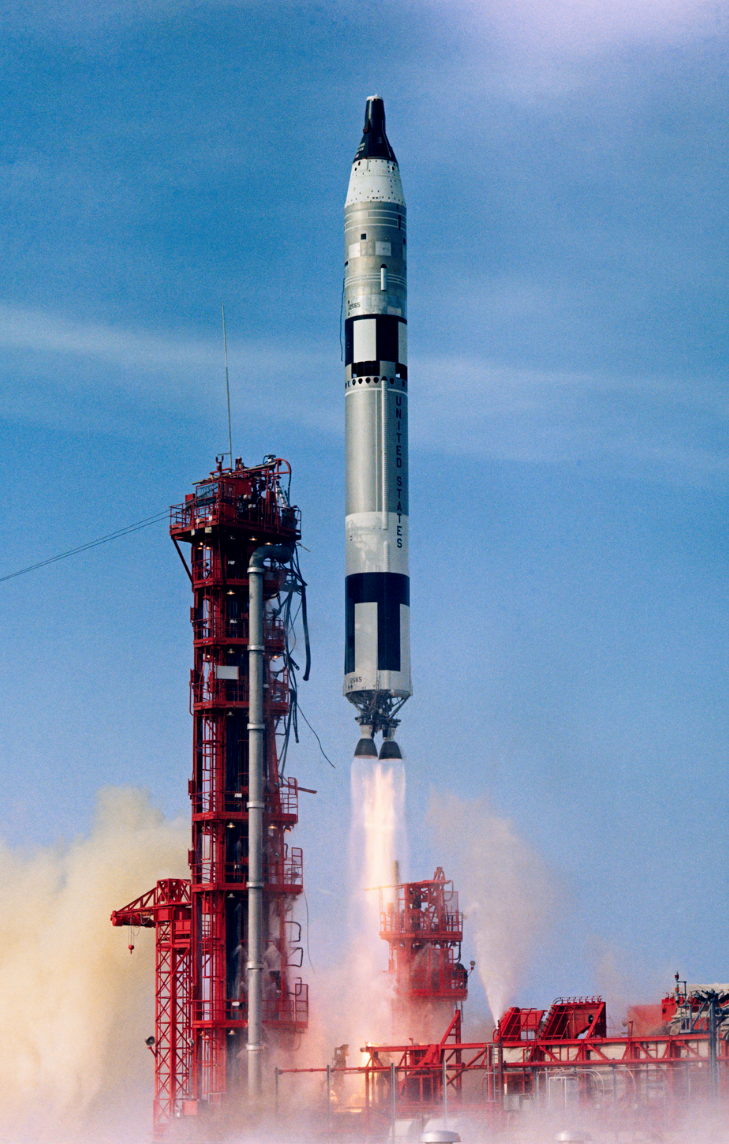
18 July 1966: At 22:20:26.648 UTC, Gemini 10 launched from Launch Complex 19 at the Cape Kennedy Air Force Station. The two astronauts aboard were John W. Young, on his second space flight, and Michael Collins. The launch vehicle was a liquid-fueled Martin SLV-4 Titan II, serial number 62-12565.
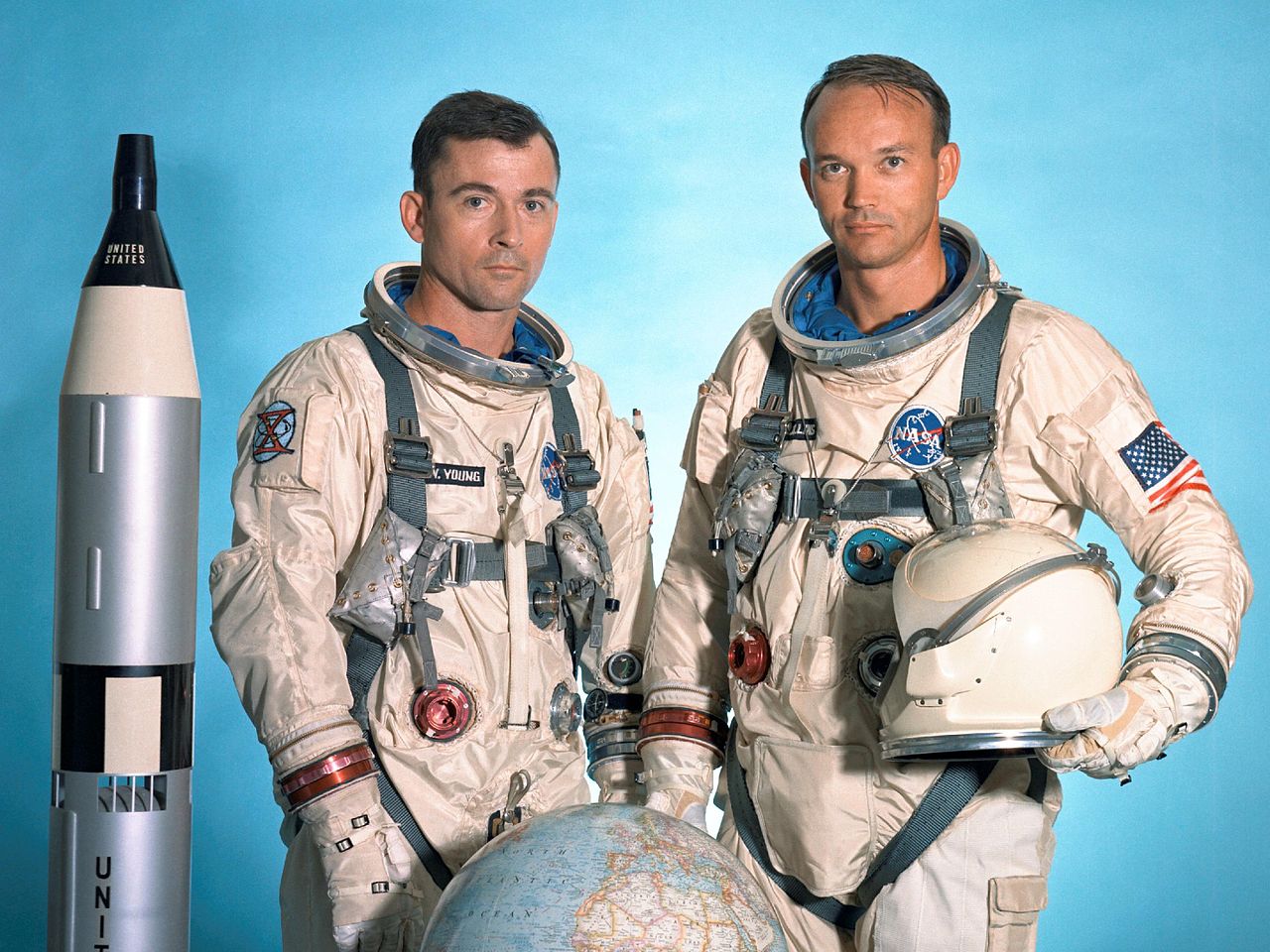
The objective of the Gemini 10 mission was to demonstrate orbital rendezvous and docking with another spacecraft, as well as “EVA”—Extra Vehicular Activity. The Gemini capsule docked with an Agena target vehicle which had been launched one hour before. The flight crew opened the hatches and Michael Collins stood in the opening, taking photographs.
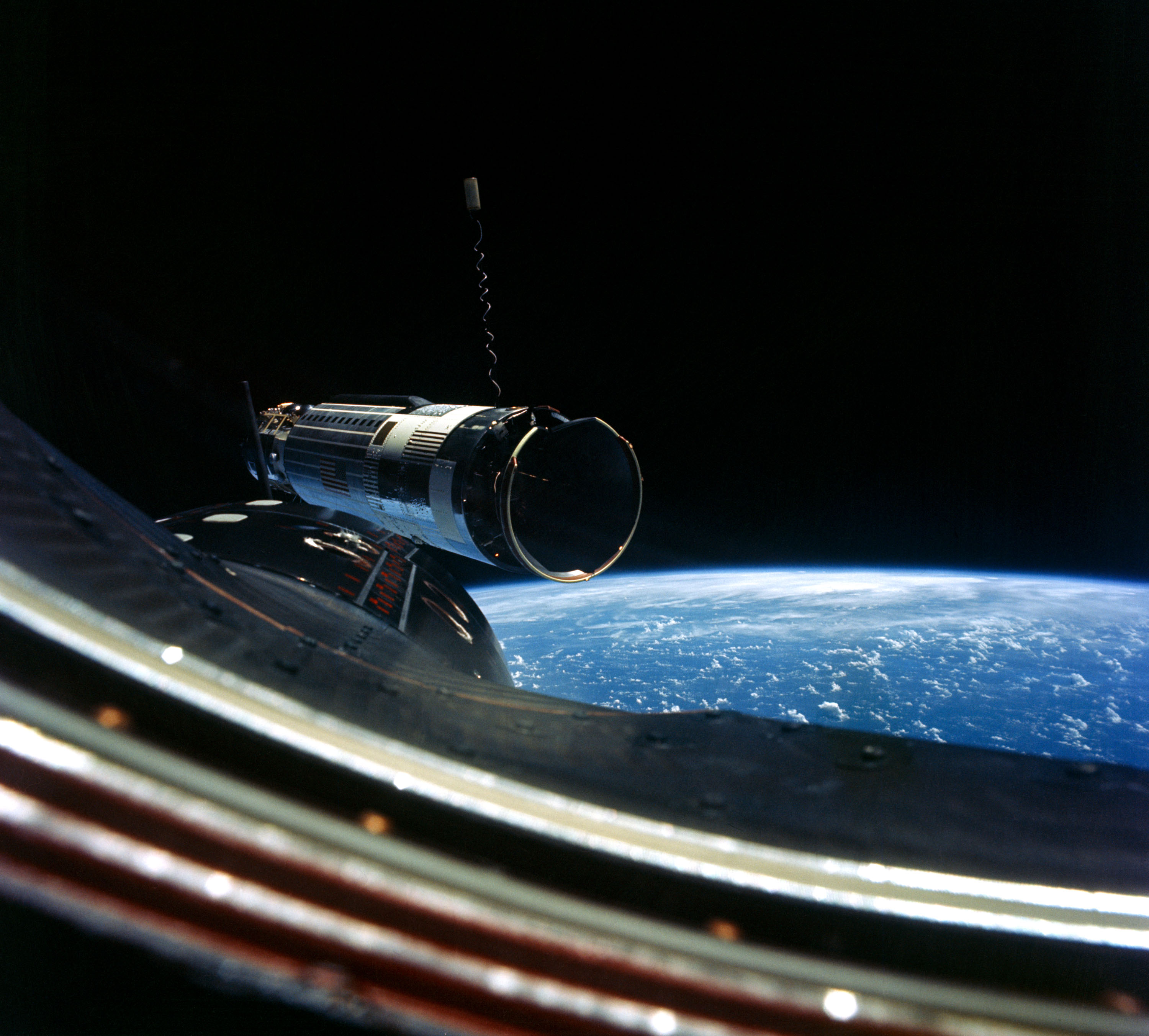
After undocking, the Gemini located and docked with another Agena from the earlier Gemini 8 flight. Collins this time left the capsule and retrieved some experiments from the dormant target vehicle before returning to Gemini 10.
After nearly three days in space, they landed in the Pacific Ocean, 3.86 miles (6.21 kilometers) from the primary recovery ship, USS Guadalcanal (LPH-7). This set a Fédération Aéronautique Internationale (FAI) Absolute World Record for Precision Landing.¹ The total duration of the flight was 2 days, 22 hours, 46 minutes, 39 seconds.
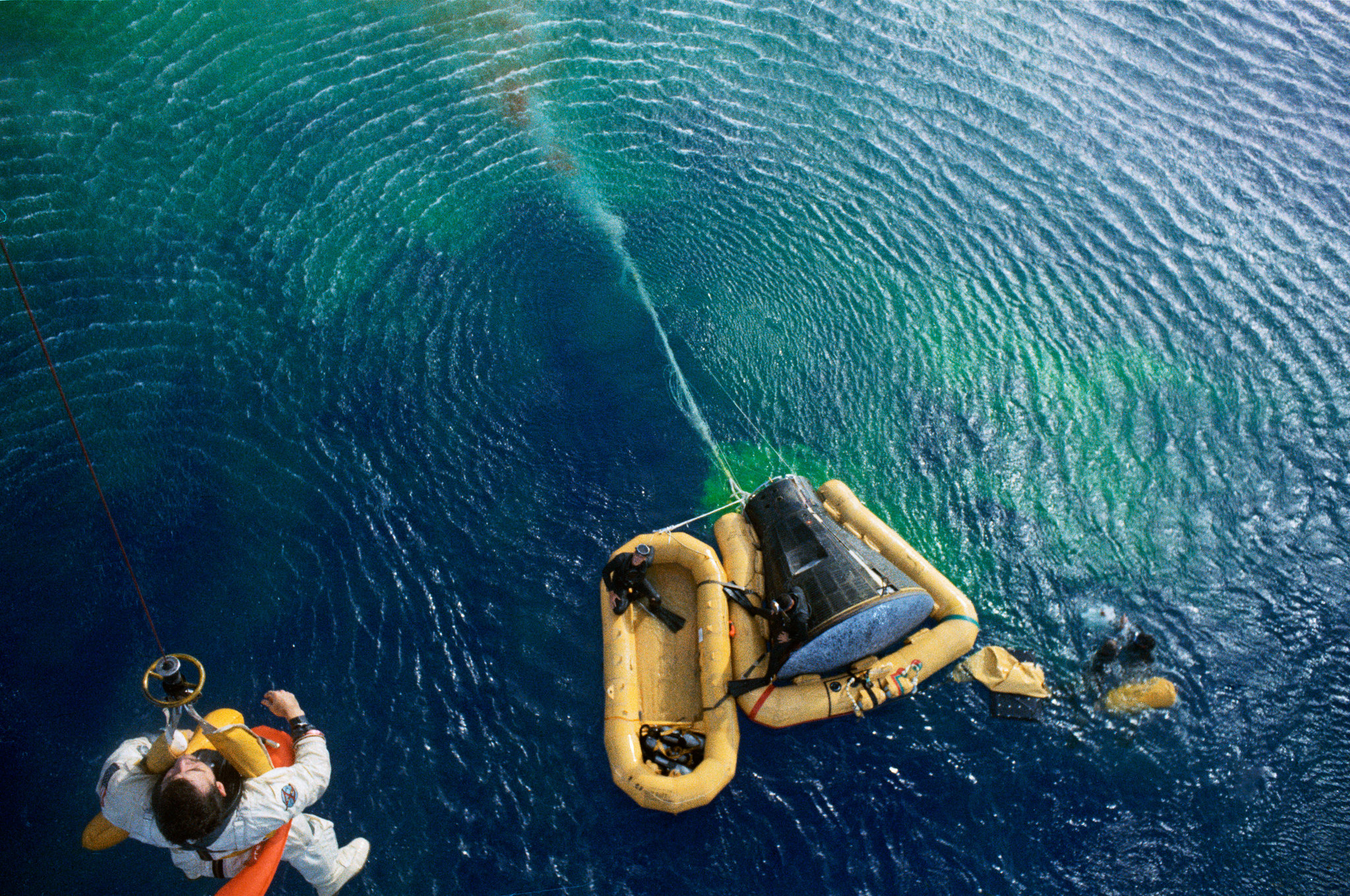

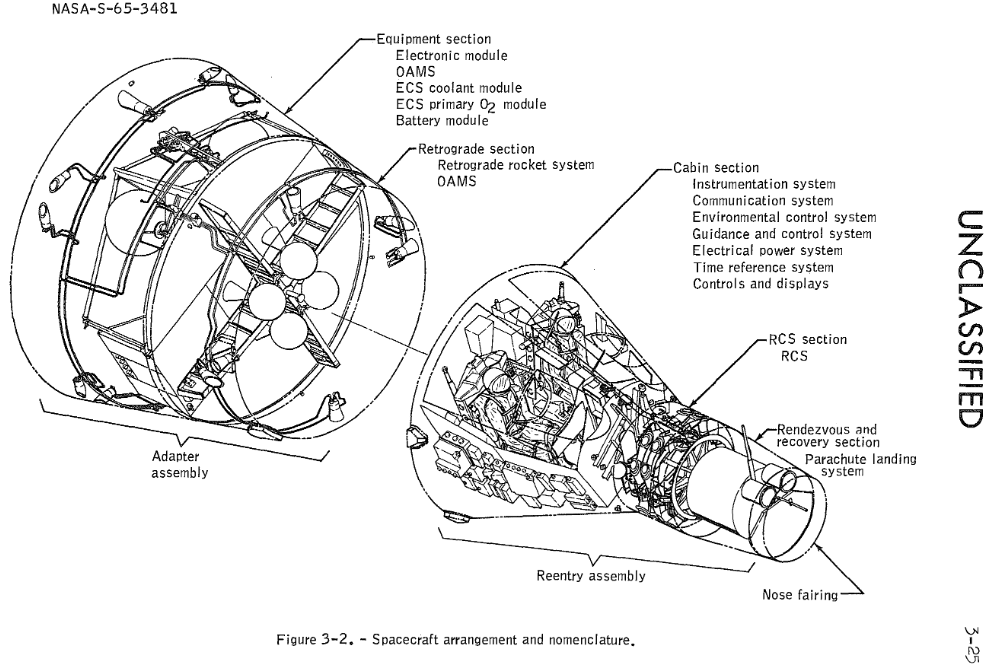

The Titan II GLV was a two-stage, liquid-fueled rocket. The first stage was 63 feet (19.202 meters) long with a diameter of 10 feet (3.048 meters). The second stage was 27 feet (8.230 meters) long, with the same diameter.

The Gemini/Titan II GLV combination had a total height of 109 feet (33.223 meters) and weighed approximately 340,000 pounds (154,220 kilograms) when fueled.⁴
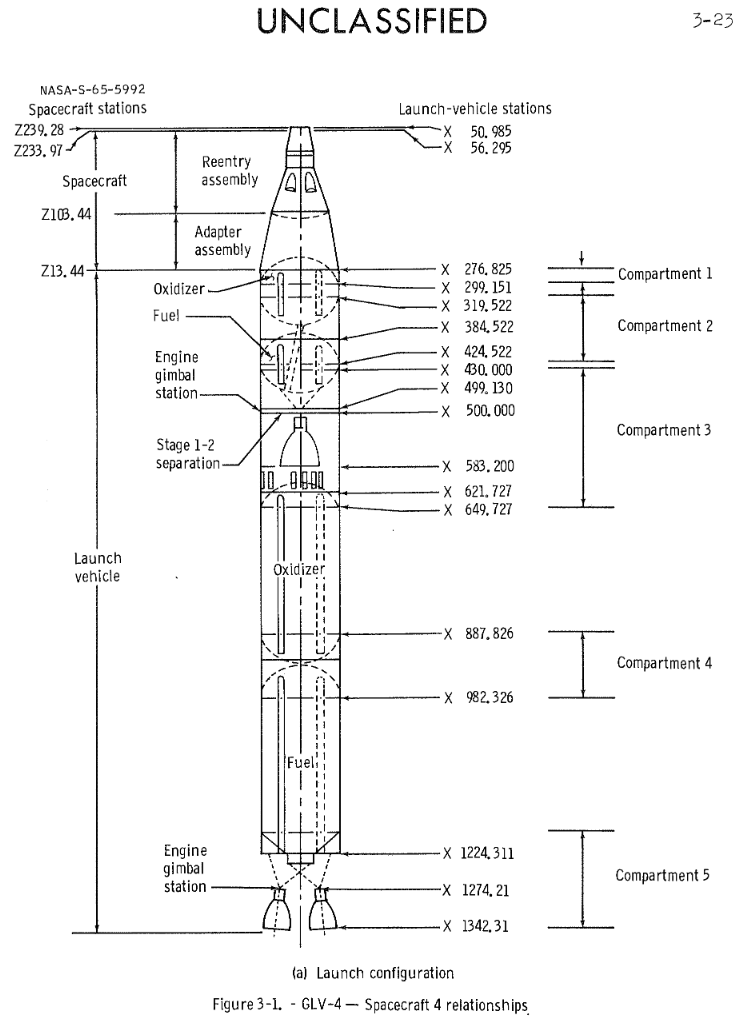
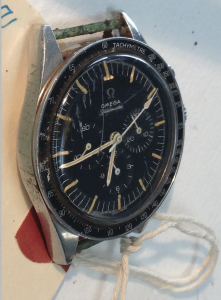
Both astronauts went on to the Apollo program, with Collins serving as Command Module Pilot for the Apollo 11 lunar landing mission, and John Young as CMP for Apollo 10. Young commanded Apollo 16, and the first space shuttle flight, Columbia STS-1 and Columbia STS-9. He was scheduled to command STS-61J to deploy the Hubble Space Telescope, but that flight was put off by the Challenger disaster. Michael Collins went on to head the National Air and Space Museum and LTV Aerospace.
Gemini 10 is at the Kansas Cosmosphere and Space Center, awaiting restoration.
¹ FAI Record File Number 10285
² The Gemini 10 first stage engine produced a flight average of 462,750 pounds of thrust (2,058.42 kilonewtons).
³ The Gemini 10 second stage engine produced a flight average of 99,168 pounds of thrust (441.12 kilonewtons).
⁴ Gemini 10/Titan II GLV combination weighed 344,856 pounds (156,424 kilograms) at 1st Stage ignition.
© 2018, Bryan R. Swopes